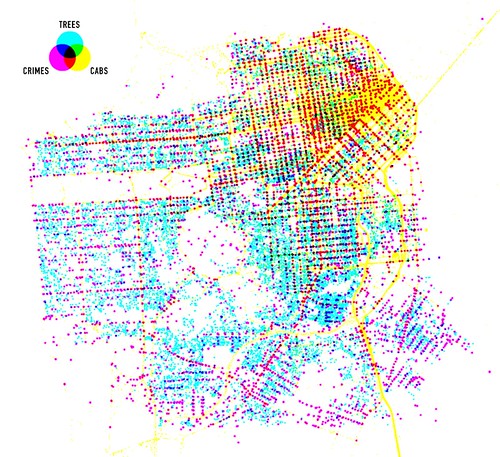- Architects Tell Prince Charles to Stuff it over his Meddling, methinks the good Prince should STFU about architecture due to Exhibit 1, Poundbury fire station he designed
- The muddled magic kingdom that is English Heritage
- Once more unto the MTA budget breach
- Sand/Stone Sahara Wall Project
- New York Notes
- The High Cost of Short Buildings
- Save the Rust Belt?
- John Boehner, Republican of Ohio, Is Ignorant
Weekend, Boy Did the Yankees Get Thumped, Links
- Loving and hating Christopher Alexander
- The Barbican Debate: Can Good Design Change the World? – more like this, please
- New Yankee Stadium a Batters Dream
- A Quarter of Texans Don’t Want to be Americans & If Texas Seceeds, Don’t Mess With It and finally Let Our Texans Go?
- WTC Logo Preservation Project by Ji Lee
- Can Modernism Mend a Broken Heart? Mister Glasses to the rescue
- 43,000 people and 2,000 vehicles an hour: why Oxford Circus is being re-built
- A very peculiar practice: How Amanda Levete is slowly finding her feet following her ex-husband’s death
- Time to face up to the brutalist truth
San Francisco
 The Layers of SF, originally uploaded by SF Brit
The Layers of SF, originally uploaded by SF Brit
Molly Wright Steenson’s Research on Steam Powered Pneumatic Tubes
Molly Wright Steenson’s Research on Steam Powered Pneumatic Tubes of the 1800s Paris is a must read.
Susan Sontag and Philip Johnson at the Seagram Building
Thursday, Opening Day, Links
- Bryan Nash Gill’s Tree Ring Prints
- The elements of networked urbanism
- Chino Otsuka reshoots an image from a location in childhood and photoshops herself back in ((via)
- Video animates the “Idaho stop”
- The Shining carpet print is in Toy Story
- Brooklyn Community Board Cuts Off Developers’ Fingers
- A Message To You, Teabaggers
- Sweet Juniper’s photos of an abandoned Detroit block
Smogr Alert 8 – Tax Day Tea Party
This is a bit of a rant, so please bear with me; in this episode I discuss the my patriotic duty of paying taxes and those infamous Tea Parties. Here is more information about the faux-grassroots tea parties.
If you don’t like politics, feel free to listen to other podcast episodes. I’m putting together some really interesting people coming up with an interview with a cartographer and professor.
Please listen inline below, download the podcast or subscribe via iTunes. Remember when you hear the ping noise, look at your screen for a visual of what we are talking about.
http://www.saxamaphone.com/mt/mt-static/plugins/Podcast/mp3player.swf
Wednesday, Tax Day, Links
- Conservatives Analogizing Themselves to Violent Terrorists
- Using the Hudson to Cool the Trade Center
- Thomas Doyle’s marvelous diorama art
- BLDGBLOG Book & Behind the Scenes of The BLDGBLOG Book
- Know Your Meme – brilliant videos
- Like FFFOund for type: We Love Typography
- Consumers and Health Care
- The Graffiti Debate: Glorifying art or vandalism?
- Smithsonian picks architects, design for African-American museum
Tuesday, Pirates Aren’t Funny, Links
- Pritzker Prize Goes to Peter Zumthor
- Biking Has Its (Tax) Benefits. Or Does It?
- Few Good Options in Pirate Fight
- London as Language
- Enclosing the BQE
- Knucklehead Politicians Want to Tear Down Beautiful Train Station
- Conservative Anti-European Rhetoric Reflects Distinctive Southern Attitudes
- Shoring Up a Landmark Ruin on Roosevelt Island
Typologies from the New Cartographic Explosion
Cartography is all the rage these days due in no small part to the ubiquity of easy to use tools. Beside my own cartographic experiments – most notably Accessible Transit Maps, Australian Territory Expansion and travel maps – there is a large amount of people creating maps from many different data sources. While these examples are not exhaustive, I have tried to collect different examples of this cartographic orgy, breaking them down into different taxonomies.
Maps from Data Sources

Shawn Allen of Stamen Design created this map of San Francisco from data sources of Trees, cabs and crime in San Francisco.
Indirect Crowdsourcing Map Data

Flickr is creating maps by reverse engineering geo-tagged photos (see more here: The Only Question Left Is).
User Created Map Legends

Matt Jones’ photo above is an example of a CloudMade map which creates maps around open mapdata and then allows users to create maps with distinctive legends and data sets.
Historical Analysis – Comparative

The Genealogy of Cities by Professor Charles P. Graves Jr. is a compilation of ancient and modern city plans, from 350 BCE to the present, depicting both built and proposed plans. Comparative in nature, this work aims to provide historians and urban designers a way to compare and contract urban form between physical locations and through time. The Genealogy of Cities also helpfully includes a CD full of digital maps to print out at any scale.
Historical Analysis – Utopias

Work AC: 49 Cities is an analysis of historical urban utopias ranging from Kenzo Tange’s Tokyo Bay project, to Corbusier’s Ville Radieuse. Comparative analysis and analysis of the utopian city itself has been performed for each of the 49 cities. 49 Cities sets out to crunch the numbers of several centuries of unrealized urbanism, all the way from the Roman city to the great utopian projects of the 20th century.
Text Maps – Type Inside Physical Features

<a href="Jenny Beorkrem’s modern, typographic neighborhood posters and screen prints uses existing borders to create artistic representations of physical places.
Text Maps – Removal of Physical Features

London’s Kerning is a typographic map of London. That is, all of the roads and physical features have been removed and in their place only th street names are present.